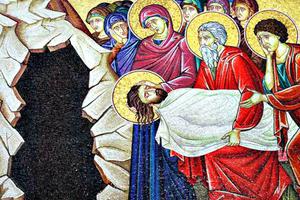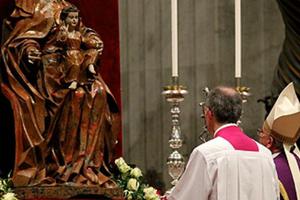Science and Faith Unite in ‘Tomb of Christ’ Exhibit
National Geographic Museum offers insight into Holy Sepulcher in Jerusalem.

WASHINGTON — There is no more sacred place in Christianity than the Church of the Holy Sepulcher in Jerusalem. And now you can visit it — virtually, anyway — in the nation’s capital at the interactive “Tomb of Christ” exhibit of the National Geographic Museum that unifies cutting-edge science and technology with faith.
The science has been deployed to conserve and shed new light on the ancient building. The faith stirs the feelings of every Christian who approaches those places where Our Savior suffered, died and rose again, according to a tradition that goes back until at least the fourth century.
The latest scientific tests confirmed the presence of rock-cut Jewish tombs dating back to the first century, when Jesus lived. The sediment in samples from the mortar was measured for its most recent exposure to light using Optically Simulated Luminescence (OSL).
Contrary to many researchers who claimed that the shrine was built only 1,000 years ago at the time of the Crusades, the mortar and marble slab covering the original burial bed have now been found to date back to 345 A.D., when Roman Emperor Constantine built the shrine around the tomb, according to National Geographic.
The exhibit celebrates the recent preservation of the Edicule of the Holy Sepulcher built by Franciscan friars in 1555. Led by an interdisciplinary group of engineers, researchers, stonemasons and professors from the National Technical University of Athens, the work began in 2016 and was completed in time for Easter 2017.
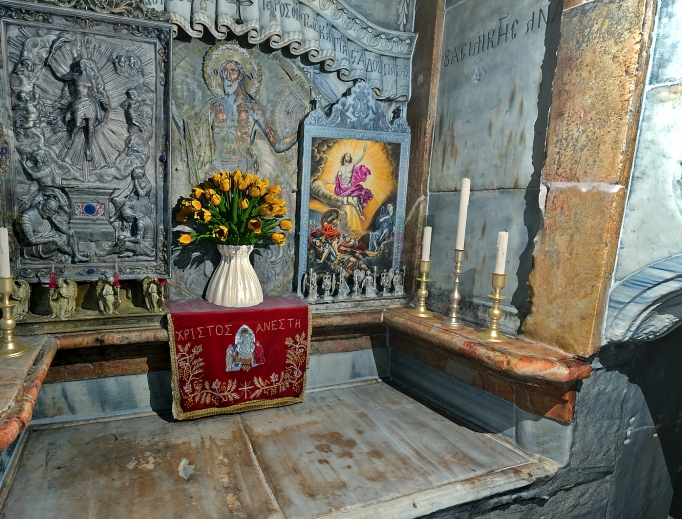
This precious complex has undergone many cycles of destruction and rebuilding since Constantine, the first Christian emperor, first visited in 325. Constantine tore down a Roman temple that had been erected to counteract growing Christian fervor and built the first church on the site. It was wrecked under Arab rule in the seventh century. In 1009, Fatimid Caliph Al-Hakim bi-Amr Allah ordered the church to be burned down. Earthquakes and fires wreaked further havoc. Each time, it was rebuilt.
The constant traffic of visitors and the destructive impact of water, humidity and soot from gas lamps and candles have undermined the stability of the building. The stone walls of the Edicule were “starting to buckle outward,” according to National Geographic Society chief archeologist Fredrik Hiebert. Intervention was urgent.
Virtual Tour
When visitors walk through the vestibule at the museum, a door opens and suddenly they are transported virtually to the portal of the Holy Sepulcher while a virtual guide describes the premises. Six religious orders of different Christian denominations (primarily the Greek Orthodox, Roman Catholic and Armenian Apostolic Churches) share the custody of this ancient building, where they hold Mass in their respective rituals and host thousands of pilgrims every day.
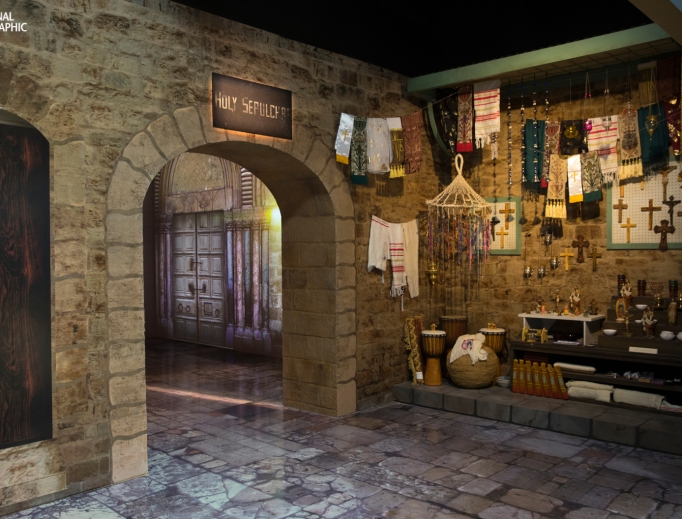
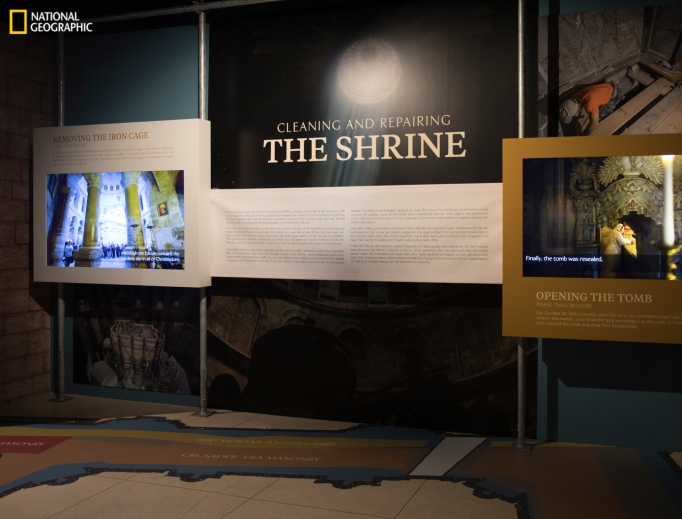
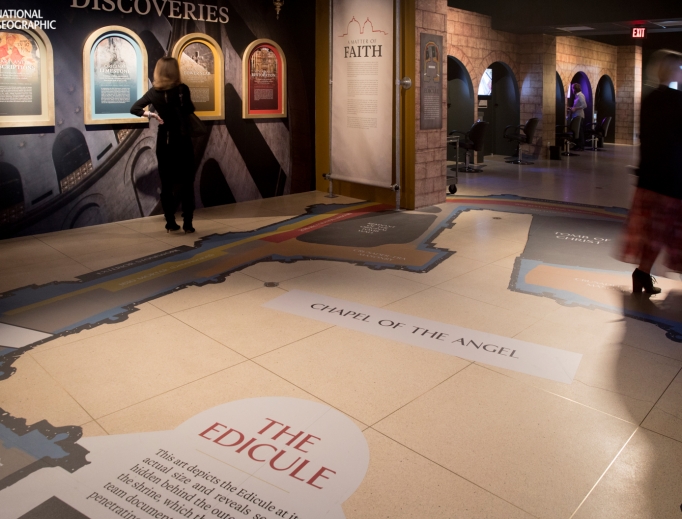
The virtual guide describes architectural details from many eras, from an early Christian narrative relief in Western style to a foliate frieze made under the Ottoman Turks. She points upward to an “immovable ladder” that has been there for 150 years and symbolizes the “Status Quo” accord, under which none of the religious orders may make any change without the unanimous consent of the others.
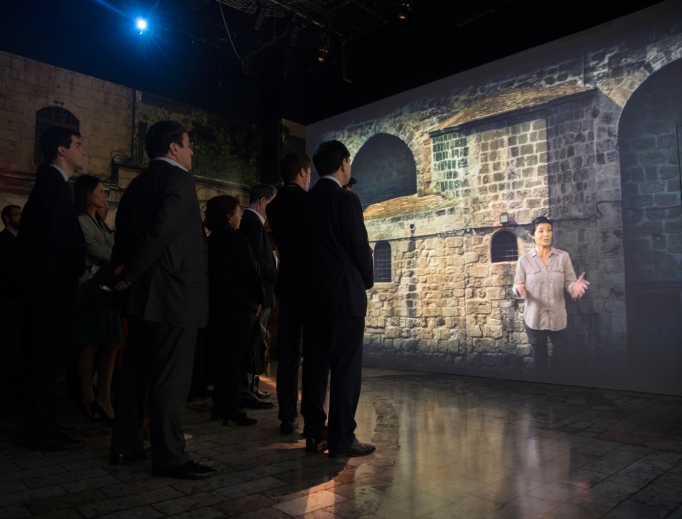
In the next room, visitors don 3-D glasses to witness the transformation of the building over its long history, culminating in a “you are there” emersion into the famous “holy fire” ceremony for the Orthodox Easter vigil.
The Technology
Next, visitors walk out into a room that features a wall with a timeline of the site’s reconstructions and renovations. They can view (and even try out) some of the noninvasive machines used to gain information about the site, such as ground-penetrating radar, radiometry and robotics.
The images gained from heat-sensing cameras allowed the team to see under centuries of soot to reveal dome and wall frescoes hidden for perhaps 1,000 years. They located voids in the masonry with the radar and filled them to stabilize the stone structure. Once the mortar had set, they removed an ugly iron “cage” that had surrounded the Edicule since the 1940s.
So as not to disturb the millions of pilgrims who visit each year, much of the work was carried on at night. Corey Jaskolski, a National Geographic explorer and engineer, described to the Register how he and his wife waited until the site was closed for the day and then were locked in all night with 50 monks to carry out the laser scanning (literally, billions of images) of the entire structure.
Only once during the yearlong process did the tomb of Christ close — for 60 hours, to lift the stone cover from the limestone rock upon which Jesus’ body was buried. A crystal window now allows visitors to see part of the holy rock, which had been invisible for centuries.
Holy Land Monastery
A visit to the “Tomb of Christ” exhibit should ideally be combined with a trip to the Franciscan Monastery of the Holy Land in America in northwest Washington, where the Franciscans are celebrating the 800th anniversary of their arrival in Acre (now in Israel) in 1217. The church, dedicated in 1899, and grounds include replicas of the sacred shrine constructed between then and the 1930s.
Although they are old, they are tangible. Visitors may even get a tour from a friar who served in the Holy Sepulcher or other shrines in the Holy Land. The adjoining church has a splendid dome, one of three in Washington that are reminiscent of the Holy Sepulcher (see related stories on the Trinity Dome in this issue).
In the National Geographic brochure, there is a welcome nod to these other D.C. sites, including the Catholic Cathedral of St. Matthew and the Basilica of the National Shrine of the Immaculate Conception as among the holy buildings of note in the nation’s capital.
There are two broader implications to the “Tomb of Christ” exhibit. First, new technologies may enable researchers and conservationists to more quickly and non-invasively conserve the sites revered by believers, wherever they may be. Second, breakthroughs in “virtual reality” will allow many who cannot afford to go to Rome or Jerusalem to experience these wonders closer to home.
writes from Virginia.
This story was updated after it was posted,
including regarding the length of time the tomb was open.
INFORMATION
- Keywords:
- national geographic
- nora hamerman
- tomb of christ





